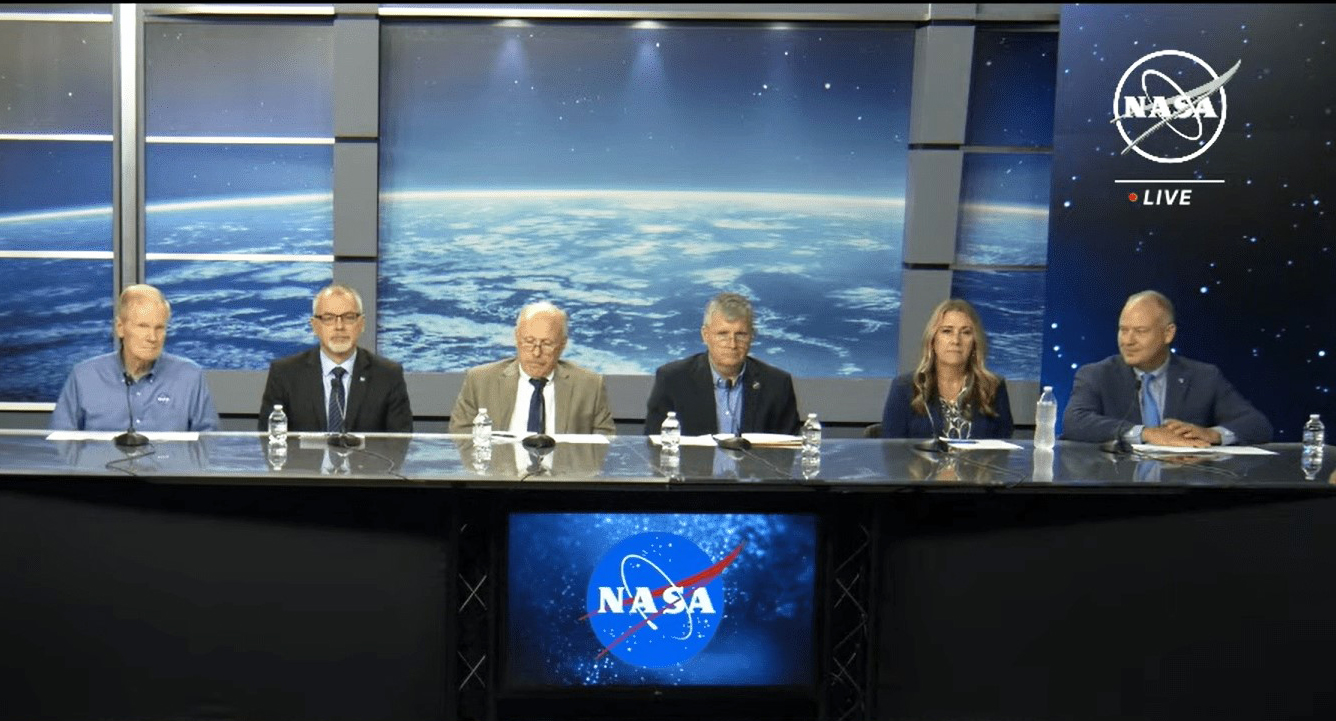NASA will attempt to return Boeing's Starliner to Earth without astronauts Butch Wilmore and Suni Williams aboard the spacecraft, the agency announced at a media briefing on Saturday. The news came as no surprise and the uncrewed return allows NASA and Boeing to continue gathering testing data on Starliner during its upcoming flight home, while also not accepting more risk than necessary for its crew.
Wilmore and Williams, who flew to the International Space Station (ISS) in June aboard NASA's Boeing Crew Flight Test on a scheduled eight-day mission, have been kept busy supporting Station research, maintenance and Starliner system testing and data analysis.
“Spaceflight is risky, even at its safest and most routine,” said NASA Administrator Bill Nelson. “A test flight, by nature, is neither safe nor routine. The decision to keep Butch and Suni aboard the ISS and bring Boeing's Starliner home uncrewed is the result of our commitment to safety. I'm grateful to both the NASA and Boeing teams for all their incredible and detailed work."
Wilmore and Williams will continue to work formally as part of the Expedition 71/72 crew through to February 2025 when they will fly home aboard a Dragon spacecraft with two other crew members assigned to the agency's SpaceX Crew-9 mission. Starliner is expected to depart from the Space Station for a controlled, autonomous re-entry and landing early next month (September).
NASA and Boeing identified helium leaks and experienced issues with the spacecraft reaction control thrusters on 6 June as Starliner approached the Space Station. Since then, engineering teams have completed a significant amount of work, including reviewing a collection of data, conducting flight and ground testing, hosting independent reviews with agency propulsion experts, and developing various return contingency plans.
Uncertainty and lack of expert concurrence did not meet the agency's safety and performance requirements for human spaceflight, thus prompting NASA leadership to move the astronauts to the Crew-9 mission.
"Decisions like this are never easy,” said Ken Bowersox, associate administrator for NASA's Space Operations Mission Directorate. “We've learned a lot about the spacecraft during its journey to the ISS and its docked operations. We also will continue to gather more data about Starliner during the uncrewed return and improve the system for future flights.”
Boeing’s Starliner is designed to operate autonomously and previously completed two uncrewed flights. It must return to Earth before the Crew-9 mission launches to ensure a docking port is available on Station.
"Starliner is a very capable spacecraft and, ultimately, this comes down to needing a higher level of certainty to perform a crewed return," said Steve Stich, manager of NASA's Commercial Crew Program. "The NASA and Boeing teams have completed a tremendous amount of testing and analysis, and this flight test is providing critical information on Starliner's performance in space. Our efforts will help prepare for the uncrewed return and will greatly benefit future corrective actions for the spacecraft."
NASA's Commercial Crew Program requires spacecraft fly a crewed test flight to prove the system is ready for regular flights to and from the Space Station. Following Starliner's return, the agency will review all mission-related data to inform what additional actions are required to meet NASA's certification requirements.
The agency's SpaceX Crew-9 mission was originally slated with four crew members and will launch no earlier than 24 September. The decision means two of the previously assigned crew members will be bumped from the mission.
NASA says it is working with SpaceX on several items before launch, including reconfiguring seats on the Crew-9 Dragon, and adjusting the manifest to carry additional cargo, personal effects, and Dragon-specific spacesuits for Wilmore and Williams.
Before the Starliner departs, the ISS astronauts are expected to rig makeshift seating for Wilmore and Williams aboard the docked Crew 8 Dragon, which arrived in March; the Crew 8 Dragon will serve as as an emergency lifeboat for its four-member crew, along with Wilmore and Williams, until the Crew 9 Dragon arrives. Crew 8 are scheduled to wrap up their own six-month tour of duty and head home at the start of October.
The decision is a big deal with potential impacts across NASA and the Artemis programme, and for Boeing, which did not have a representative at the media briefing.
Assuming a safe uncrewed return of Starliner there could now be more than a year of new testing, rework and re-certification before an uncrewed cargo mission in 2026. If the next crew launch is not until the end of 2026 or 2027 there will only be a few mission opportunities before the ISS is terminated. At this point the immediate future for Boeing’s Starliner is looking far from rosy.
NASA formally abandons Starliner for crew return to Earth











